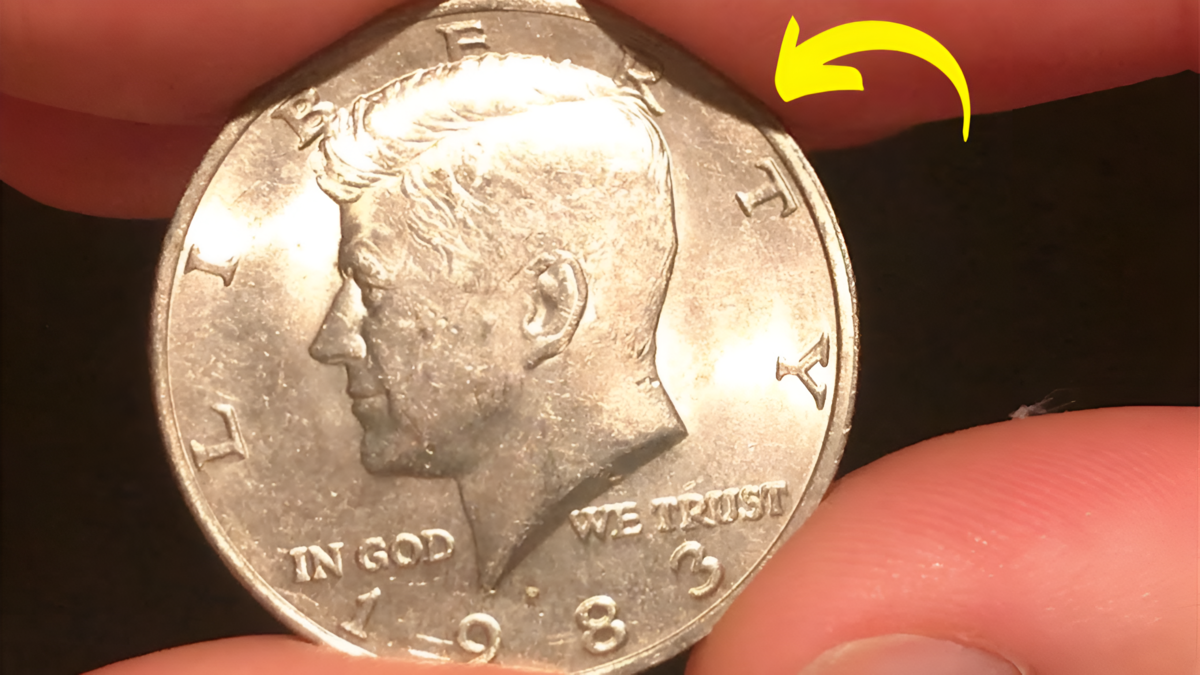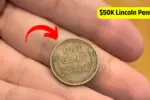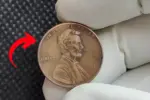Coins often serve as windows into the past, carrying stories of the people, places, and moments they represent. Among the most iconic coins in U.S. history is the Lincoln Wheat Penny a small, everyday piece of currency that has captivated the imaginations of collectors and enthusiasts for over a century. Introduced in 1909 to honor the 100th anniversary of Abraham Lincoln’s birth, this humble coin has become a symbol of American history and artistry.
While millions of Lincoln Wheat Pennies are still in existence today, not all are created equal. Some rare varieties have reached jaw-dropping valuations, with one particular penny reportedly worth a staggering $105 million. Could such an incredible treasure truly exist and might it still be lurking in someone’s pocket change or coin jar? Let’s dive into the fascinating history, extraordinary rarity, and enduring legacy of the Lincoln Wheat Penny and uncover the secrets behind its astronomical value.
A History Steeped in Symbolism
The story of the Lincoln Wheat Penny begins in the early 20th century. For decades, U.S. coins featured allegorical figures like Liberty, representing ideals rather than actual people. That changed in 1909 when the U.S. Mint decided to celebrate Abraham Lincoln’s 100th birthday by placing his likeness on the country’s smallest denomination the one-cent coin.
Victor David Brenner, a renowned sculptor and medalist, was chosen to design the coin. Brenner’s portrait of Lincoln on the obverse was inspired by a bust he had sculpted years earlier. The reverse featured two wheat stalks flanking the words “ONE CENT,” symbolizing prosperity and resilience. It was the first U.S. coin to depict a real person, marking a significant departure from tradition.
The design was an immediate success, but it wasn’t without controversy. Brenner’s initials, “V.D.B.,” were prominently displayed on the reverse, sparking backlash from critics who felt it was overly ostentatious. As a result, the initials were removed after a few months of production, creating one of the rarest and most valuable varieties: the 1909-S VDB penny.
The Lincoln Wheat Penny remained in circulation until 1958, when it was replaced by the Lincoln Memorial design. Over its nearly 50-year run, billions of Wheat Pennies were minted, ensuring their enduring presence in collections and circulation alike.
Why Some Lincoln Wheat Pennies Are Worth Millions
While the vast majority of Lincoln Wheat Pennies are worth only their face value, a select few have become highly sought after by collectors, fetching eye-popping prices at auctions. The value of a coin often depends on factors such as rarity, condition, historical significance, and demand. Several key varieties of Wheat Pennies stand out for their exceptional value:
- 1909-S VDB Penny:
Only 484,000 of these coins were minted, making them one of the rarest Lincoln Wheat Pennies. A well-preserved specimen can sell for thousands of dollars. - 1943 Copper Penny:
During World War II, copper was conserved for military purposes, and pennies were made from zinc-coated steel instead. However, a small number of copper planchets from 1942 were mistakenly used to produce 1943 pennies. Fewer than 20 of these copper pennies are known to exist, and they have sold for as much as $1.7 million at auction. - 1955 Doubled Die Penny:
A minting error caused the date and lettering on this coin to appear doubled. The striking visual effect makes this variety highly collectible and valuable.
The Lincoln Wheat Penny valued at $105 million reportedly falls into the category of mythical coins its existence is the stuff of legend, sparking endless speculation and intrigue in the numismatic world. While no official documentation confirms the discovery of such a coin, its story serves as a reminder of the incredible potential value hidden in seemingly ordinary objects.
The $105 Million Penny: Myth or Reality?
The idea of a $105 million Lincoln Wheat Penny may sound too incredible to be true, yet stories of extraordinary coins have circulated for decades. Could such a coin exist, or is it merely a myth perpetuated to fuel the imagination of collectors and treasure hunters?
Some theorists suggest that a $105 million penny might be a one-of-a-kind prototype or an experimental coin produced under unique circumstances. Others believe it could be a historically significant piece, perhaps tied to a prominent figure or event. Regardless of its origin, the hypothetical value of such a coin reflects the intense passion and competitive nature of the numismatic community.
Even if the $105 million penny remains elusive, its legend continues to inspire people to search their pocket change and old coin collections, hoping to discover a hidden fortune.
How to Identify a Valuable Lincoln Wheat Penny
If you’re feeling inspired to start your own treasure hunt, here are some tips for identifying valuable Lincoln Wheat Pennies:
- Check the Date and Mint Mark:
Look for key dates like 1909-S, 1914-D, and 1943 copper pennies. The mint mark (such as “S” for San Francisco or “D” for Denver) can significantly impact a coin’s value. - Examine the Condition:
Coins in excellent condition, with minimal wear and clear details, are worth more than heavily circulated specimens. Professional grading services can provide an accurate assessment of a coin’s condition. - Look for Errors:
Minting errors like doubled dies, off-center strikes, and clipped planchets can dramatically increase a coin’s value. - Consult Experts:
Numismatic experts and organizations like the Professional Coin Grading Service (PCGS) or the Numismatic Guaranty Corporation (NGC) can help verify the authenticity and value of rare coins.
Still in Circulation?
The notion that a $105 million penny might still be in circulation is both thrilling and plausible. With billions of Wheat Pennies minted over nearly five decades, it’s entirely possible that rare specimens could be hiding in jars, drawers, or even loose change at the bottom of a purse.
Stories of remarkable coin discoveries abound, from people finding rare pennies in rolls purchased from banks to stumbling upon valuable coins at flea markets. These tales fuel the hope that treasure hunting isn’t just a fantasy it’s a real possibility for anyone willing to look.
A Legacy That Endures
The Lincoln Wheat Penny is more than just a piece of currency; it’s a tangible link to the past, representing a time of change, innovation, and resilience in American history. Its enduring popularity among collectors speaks to its timeless appeal, while its stories of rarity and value continue to captivate the imagination.
Whether or not the $105 million Lincoln Wheat Penny exists, its legend serves as a reminder of the hidden treasures that surround us. It inspires us to look closer at the everyday objects we often take for granted, reminding us that even the smallest things can hold immense value.
So, the next time you come across a Lincoln Wheat Penny, don’t dismiss it as mere pocket change. You never know it could be a piece of treasure with a story worth millions.
FAQs
1. What makes the Lincoln Wheat Penny valuable?
The value of a Lincoln Wheat Penny depends on factors like rarity, condition, minting errors, and historical significance. Some rare varieties have sold for thousands to millions of dollars.
2. Is there a $105 million Lincoln Wheat Penny?
No verified coin has sold for $105 million, but rumors of such a penny persist, fueled by speculation and urban legends in the numismatic community.
3. What are some of the rarest Lincoln Wheat Pennies?
Key rare varieties include the 1909-S VDB, the 1943 copper penny, and the 1955 Doubled Die penny, each of which has fetched high auction prices.
4. Can I still find valuable Lincoln Wheat Pennies?
Yes, while it’s rare, some Lincoln Wheat Pennies are still in circulation or tucked away in coin jars, making them possible to find.
5. How can I identify a valuable Lincoln Wheat Penny?
Look for key dates, mint marks, and minting errors like doubled dies or off-center strikes. Coins in excellent condition are more valuable, and experts can help assess authenticity and worth.



